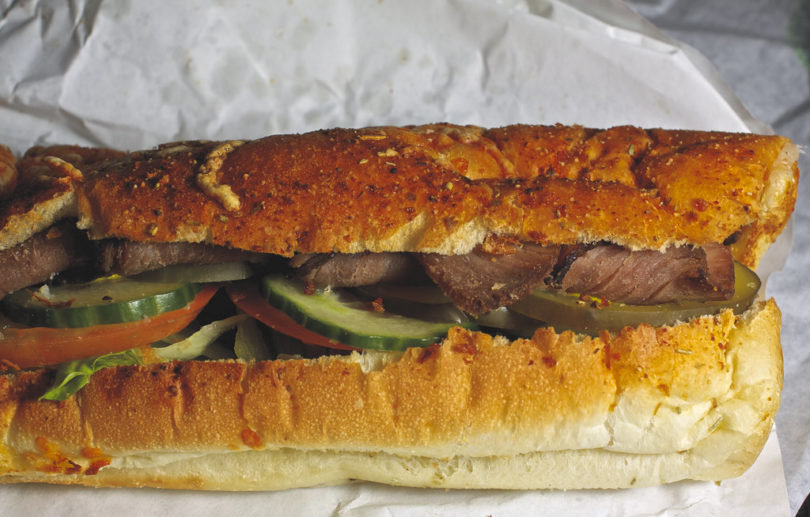The items you select, as well as how carefully you cut, pile, and spread each of them and, go a long way toward creating a genuinely outstanding sandwich.
Making sandwiches is a basic life skill. It can revitalize a workplace lunch, create friends, and even win over foes. The shunning, in my opinion, must come to a stop! When did you last look in a cookbook for a sandwich recipe?
Take a look at some of our favorite sandwich ideas from all around the nation.
- Select a decent loaf of bread.
If you want to go fancy, you can make your fresh bread. I start with just an uncooked ciabatta baguette from a neighborhood baker (or another sort if they’re eventually sold out). Pre-sliced bread, in my opinion, becomes too soggy too quickly.
- Get yourself extra mustard.
Spread mustard only on the base layer of the ciabatta bread after slicing it horizontally. That’s not just the mustard, however. I like well mustard since it complements the upcoming meat. Creamy spreading should be avoided here since they might overpower the taste of the other components (don’t worry, mayo and other condiments will be added later). However, quality mustard will provide flavor all without competing. Because it is so nearest to the sense of taste, it’ll taste finest if it’s on the base.
- Arrange the steak and cheese on top of each other.
That is the sequence I adopt, starting at the base and working my way up. Request diced meat from the deli counter—it should be paper-thin. The meat is placed on top of the mustard: pastrami or roast beef, ham, or cured meats. This keeps the fresh meat from slipping out from the sandwich when you take the sandwich’s first bite.
Layering on a fine, aged Swiss is a good idea. Because the richness of cheese may mask the taste, I use no more than a 1:4 ratio of cheese to meat. Furthermore, a small amount of aged cheese goes a long way.
Test Kitchen tip: Make the meat layer approximately half an inch broader than the bread all the way around. Why? Because of the following components.
- Put your vegetables in.
Place finely sliced tomatoes & red onions on top of the shingle (marinate the raw onions in salt, pepper, olive oil, and red wine vinegar for about 5 minutes for true sandwich glory). On top of the tomatoes and onions, a layer of loose-leaf lettuce (or one of these other sorts) stops the bread from drying out. The cheese below prevents the vegetables from slipping around, while the large meat layer prevents the toast from becoming soggy.
- Assemble everything
Well, because I’m a lover of mayonnaise, I slather it on the top bread piece, and it’s delicious well with the salad. (As a side note, light mayo is OK here.) Place the top of the bread on the upper edge of both the sandwich and push it all together. Allow the oil, vinegar, and tomato juices to escape by tilting it crosswise for several seconds. Then it’s time to eat.
Once you’ve mastered the process described above—for science or any other reason—you may go on to experimenting with additional substances. Simply follow the steps mentioned, and your wonderful sandwiches will soon be recognized far and broadly.

